Tanzanian Food Dishes: Basic Overview
Common Ingredients
Common Cooking Methods
Courses
Meals
Key Taste
Eating Etiquette
Meal Presentation
Culinary Festivals
Influence and Fusion
Popular Types of Tanzanian Dishes
-
Rice Dishes
There are many nutritious and easy-to-make rice dishes in Tanzanian cuisine.
These dishes can be either savory entrees or versatile side dishes to serve with more flavorful specialties.
Many Tanzanian rice dishes are inspired by Indian cooking.
-
Stews
Hearty stews are important main dishes in Tanzania.
These dishes are very diverse, ranging from nourishing stews made with meat or seafood to plant-based delights with vegetables as the main ingredients.
Tanzanian stews go well with rice and other side dishes.
-
Curries
Curries are a popular category of dishes in India, highlighting the influence of Indian cuisine on local cooking.
Tanzanian curries can be entirely plant-based or made with meat and seafood.
These dishes usually include a large amount of coconut milk and spices.
-
Snacks
Snacks in Tanzania include many types of dishes, but fried dishes are the most popular ones.
These dishes can be sweet or savory, depending on the main ingredients.
Tanzanian snacks are also great appetizers, entrees, and street food dishes.
Tanzanian dishes are specialties widely found in Tanzania, a country in East Africa. These dishes share similarities with many culinary delights in the region, such as Kenyan specialties.
Situated along many ancient trade routes, Tanzania has long been a melting pot of cultures, so its food offerings are a fusion of many cuisines, especially Middle Eastern delicacies and Indian delicacies.
Continue reading to discover informative facts about traditional Tanzanian food, including its core features, global popularity, and healthy aspects.
Next, I will present you with information about the best 21 dishes in Tanzania, an overview of Tanzanian cuisine, and recommended food and drink pairings.
21 Most Popular Tanzanian Dishes with Filters
Scroll down and explore the 21 most terrific dishes in Tanzania! From national and fusion dishes to traditional specialties and street food delights, you will learn about them all. Don’t forget to use the interactive filter to make your experience smoother.
You can filter according to alphabetical sorting, main ingredients, taste, cooking methods, dish types, courses, and global popularity. Alternatively, search the dishes based on traditional, national, street food, and fusion options.
Chipsi Mayai
- National
- Street Food
Chipsi mayai, literally “chips and eggs,” is a popular street food in Tanzania. Also known as zege, it appeared for the first time in the streets of Dar Es Salaam, Tanzania’s largest city, around the 1990s.
Chipsi mayai consists of crispy fried potatoes mixed with beaten eggs, which are fried together like an omelette. Sometimes, onions, bell peppers, and additional spices are added to this mix of chips and eggs.
Tanzanians commonly serve chipsi mayai with a side of kachumbari (a fresh tomato and onion salad) and chachandu (a hot sauce), creating a fast yet filling meal. From rural areas to urban regions, this savory street food is always an essential part of local cuisine.
Chapati
- Traditional
Chapati, also known as roti, is a classic flatbread in Tanzania and many other neighboring African countries. It is a common side dish for various stews and curry dishes.
Most historical records say that chapati originated in ancient India and was spread to East Africa, including Tanzania, through trade. However, some theories posit that this versatile flatbread was actually created in East Africa before being introduced to the Indian subcontinent.
As a flaky, layered flatbread, chapati is made primarily from wheat flour, water, and oil. The dough is skillfully rolled out, coiled, and then rolled again before being pan-fried to a golden brown.
Ugali
- Traditional
Ugali is a ubiquitous staple food in Tanzania and many countries throughout Africa. It is made by mixing white corn flour with boiling water until the mixture forms a dense, dough-like consistency.
The mild taste of ugali makes it the perfect accompaniment to numerous flavorful dishes such as stews, grilled meats, and vegetables. Tanzanians traditionally scoop a small portion of ugali, shape it into a ball, and dip it into sauces or scoop up other food.
Ugali dagaa is a well-known Tanzanian food combo of ugali and fried sardines, which are abundant in the country’s waters.
Nyama Choma
- Traditional
Nyama choma, literally “grilled meat,” is a beloved Tanzanian delicacy that is synonymous with celebration and community. It is typically made from marinated goat, beef, or chicken.
The slow grilling process gives nyama choma a succulent, tender meat and a rich, smoky flavor. Complement these excellent traits with ugali, salads, or beer.
Nyama choma was created by the Massai people, a pastoral ethnic group living in modern-day Tanzania and Kenya. Those people tended large herds of cattle and lived near plentiful game parks.
Compared to grilled steaks in the West, the Tanzanian version may be a little tougher but definitely gamier.
Pilau
- Traditional
Pilau, also known as pilaf, is a well-known Tanzanian rice dish with roots in the coastal Swahili culture. Locals learned how to make it from merchants and traders from the Middle East and South Asia, the cradles of pilau.
To prepare this fragrant dish, people prepare an aromatic base of various spices, then add rice and optional meat, such as chicken, beef, or goat. These ingredients are cooked in a rich stock into a hearty and flavorful dish fit for special occasions or religious festivals.
Zanzibar Pizza
- Fusion
- Street Food
Zanzibar pizza is an iconic Tanzanian street food from the semi-autonomous region of Zanzibar. It was created around the 1980s and 1990s by a man named Haji Hamisi.
Despite its name, Zanzibar pizza bears little resemblance to traditional Italian pizza. Instead, this dish is made by wrapping a thin dough around a filling and shallow-frying it with ghee.
Seasoned meat (often minced beef or chicken), onions, peppers, beaten eggs, cheese, and mayonnaise are among the most popular filling ingredients for this “pizza” dish. Premium versions are pressed with seafood, while sweet ones often feature fruits or Nutella.
Many people think Zanzibar pizza is more similar to murtabak (stuffed grilled pancakes) than pizza. A serving of spicy sauce for dipping is the best side for this Tanzanian street food.
Mchuzi wa Samaki
- Traditional
Mchuzi wa samaki is a famous fish-based stew from Tanzania. It features many different types of fish, depending on the region.
For example, people in northern Tanzania often make mhuzi wa samaki with kambale fish. Meanwhile, tilapia and migebuka fish are commonly used in the central and Lake Zone regions.
Besides fish, this creamy Tanzanian fish stew contains onions, carrots, tomatoes, green peppers, and coconut, with curry powder and lemon juice for flavoring.
Matoke
- Traditional
Matoke refers to both green bananas and a one-pot dish prepared with these fruits in Tanzania. As a dish, matoke involves steaming or boiling cubes of green bananas with beef, beans, nuts, and vegetables into a delicious and hearty stew.
Matoke bananas have long been an important crop and a great part of the cooking traditions of Tanzania and other East African countries. The bananas from the Kagera region in northwestern Tanzania are especially favored in cooking as they have a superior taste and texture.
Wali Wa Nazi
- Traditional
Wali wa nazi, or coconut rice, is a classic side dish for curries and stews in Tanzania. It hails from the Swahili coast, which is famous for its coconut palms.
The preparation of Tanzanian coconut rice requires cooking rice with salt in coconut milk, infusing every grain with a touch of subtle sweetness and creaminess. Spices, like cardamom, cinnamon, and cloves, are occasionally added for extra fragrance.
Mishkaki
- Street Food
Mishkaki is a beloved Tanzanian dish of skewered and grilled beef. The meat is seasoned with various spices before being grilled over charcoal into a savory dish with a juicy texture and a smoky aroma.
Grilled beef on skewers is widespread throughout the streets in Tanzania in the evening. Locals love enjoying them with roasted potatoes or plantains, salads, and beer.
Sukuma Wiki
- Traditional
Sukuma wiki, or simply sukuma, is a vegetarian Tanzanian dish prepared by sautéing collard greens with onions, tomatoes, and spices. It is slightly bitter but also delightfully savory.
Sukuma wiki means “push/ stretch the week” in Swahili, highlighting the role of this inexpensive dish in stretching meals to last until the end of the week. Rice and ugali, which aren’t costly themselves, are the best accompaniments for this vegetarian dish.
Mtori
- Traditional
Mtori is a traditional Tanzanian soup or stew originating from the northern regions of the country. It is particularly among the Chagga people living on the slopes of Mount Kilimanjaro.
The main ingredients of mtori include green bananas and beef, which are boiled together until soft. The bananas are then mashed and returned to the pot with the meat to create a thick, starchy broth.
While mtori is already rich and nutritious, adding potatoes, milk, and onions will make it even tastier. Mtori is a popular dish for breakfast and other meals; it is a favorite option for women after giving birth because of its high nutritional profile.
Mchuzi Wa Biringani
- Traditional
Mchuzi wa biringani, or eggplant curry, is a flavorful Tanzanian dish that showcases the beauty of local vegetarian fare. It hails from the Swahili people in the coastal area.
Locals prepare this Tanzanian curry by stir-frying bite-sized eggplant pieces with tomatoes, carrots, onions, potatoes, and aromatic spices before adding coconut milk to the pot. The resulting creamy and savory curry goes well with rice and chapati.
Mchemsho
- Traditional
Mchemsho is a classic Tanzanian soup and stew from the northern regions. A highly nutritious dish, it is usually enjoyed by pregnant women, nursing mothers, sick people recovering from illness, and individuals suffering from a hangover.
Mchemsho includes various ingredients based on availability and preference, such as meat (chicken or beef), bananas, potatoes, tomatoes, carrots, and bell peppers. All are simmered in a flavorful broth heavily seasoned with spices.
The slow cooking process melds the flavors together and turns mchemsho into a rich, hearty stew with tender meat and vegetables.
Wali Na Maharage – Rice And Beans
- Traditional
Wali na maharage, or rice and beans, is a popular dish in Tanzanian cuisine. It combines the two important staples in a flavorful blend of onions, tomatoes, spices, and, sometimes, coconut powder.
In the old days, people cooked rice and beans in the same pot, but modern wali na maharage usually calls for preparing the two ingredients separately. Wali na maharage is a versatile dish that goes well with many Tanzanian specialties.
Samaki wa Kupaka
- Traditional
Samaki wa kupaka is a fantastic fish dish enjoyed in many parts of Tanzania, especially along the coast. It reflects the interplay of African, Arab, and Indian influences in local cuisine.
Tanzanians prepare samaki wa kupaka by grilling large pieces of fish and coating them with a cream and fragrant sauce of spices, coconut milk, tamarind, and lemon juice. With its diverse condiments, this grilled fish dish is a balance of sweet, savory, and spicy flavors.
Kuku Paka
- Traditional
Kuku paka, also known as kuku na nazi, is a sought-after coconut-based chicken curry in Tanzania. It is a specialty of the coastal Swahili culture.
While char-grilled chicken is the most widely used type of protein, Tanzanians sometimes replace it with shrimp or fish. Serve the curry with rice or flatbread, and you will be mesmerized by the juiciness of the chicken and the creaminess of the broth enriched with coconut milk.
Mchicha – Spinach And Peanut Curry
- Traditional
Mchicha is a delicious Tanzanian curry that includes spinach, coconut milk, and peanut butter. Its creamy, nutty flavor and dense consistency make it an ideal entree to serve with rice, ugali, or cooked beans.
As a mix of leafy greens and rich peanut sauce, mchicha offers a vegetarian option that can suit any meal of the day.
Kashata
- Street Food
- Traditional
Kashata, or peanut brittle, is a beloved Tanzanian snack of Swahili origin. Outside Tanzania, it is also a common sight in many East African streets and markets.
Peanuts and grated coconut are indispensable ingredients in kashata, but milk, cinnamon, and nutmeg add extra aromas. This chewy, crunchy, and sweet snack goes well with strong black coffee, a favorite Tanzanian beverage.
Urojo
- Street Food
- Traditional
Urojo, also known as Zanzibar mix, is a sought-after street food from the region of the same name in Tanzania. It features various food ingredients and dishes derived from Indian cuisine.
Zanzibar mix consists of fried cassava, bhajias (deep-fried chickpea fritters), kachori (spiced potato balls), boiled eggs, and mishkaki. These ingredients are drenched in a tangy, spicy, and slightly sweet yellow soup made from mangoes and tamarind.
In terms of garnishes, people usually enjoy urojo with chutneys, chachandu (a Swahili hot sauce), crispy sev (thin fried noodle-like snacks), and raw onions.
While urojo is well-known throughout Tanzania, the night market at Forodhani Gardens in Zanzibar is still the best destination to find it.
Mandazi
- Street Food
- Traditional
Mandazi is a type of fluffy, triangular-shaped fried bread widely enjoyed in Tanzania. Also known as an East African doughnut, it belongs to Swahili cuisine and can be found in many countries in the region.
Wheat flour, milk, sugar, and eggs are the ingredients that make up this sweet Mandazi doughnut-like snack and breakfast dish. Mandazi is a common feature in homes and street food stalls, especially in the morning and during tea time or coffee breaks.
Also, when you attend Muslim marriage ceremonies in Tanzania, you may encounter mandazi served with tea and soft drinks.
What Is Special About Tanzanian Cuisine?
Below are several key factors that create the diverse culinary landscape of Tanzania.
Tanzania is home to more than 100 ethnic groups and tribes whose cooking traditions contribute significantly to the national cuisine. The largest groups include the Sukuma, Chagga, Swahili, and Maasai.
Swahili people are an ethnic and cultural group found along the coast of many East African countries, including Tanzania.
The coastal region of Tanzania, particularly Zanzibar and the Swahili coast, has been significantly influenced by Arab and Persian traders who visited the region as early as the 8th century.
Indian traders and immigrants have also left a lasting impact on Tanzanian cuisine. In particular, the 19th-century influx of Indians has led to many aspects of Indian cuisine being incorporated into Tanzanian cooking.
Also, European colonial powers also introduced new cooking methods and ingredients during the time they controlled Tanzania.
Tanzanian cuisine features many dishes hailing from the region of Zanzibar, especially snacks and street food.
With its diverse geography, from the coast of the Indian Ocean and the majestic Mount Kilimanjaro to the Serengeti Plain, Tanzania has many kinds of food ingredients at its disposal.
Fish, plantains, rice, cassava, corn, legumes, spices, and vegetables are important ingredients in Tanzania cooking. There are regional variations in the availability of these ingredients; for example, people on the Swahili coast use more seafood, coconuts, and spices.
In the next section, I will suggest a few fantastic beverages that are ideal for pairing with dishes in Tanzania.
What Are the Best Beverages to Pair With Tanzanian Dishes?
Many dishes in Tanzanian cuisine go well with the four following types of beverages; here are my recommended pairings.
Tea
Tea, known as chai in Tanzania, is a versatile beverage that can accompany various casual dishes. My top picks are chapati, kashata, and mandazi.
Beer
Tanzanians usually enjoy beer with hearty and grilled dishes, including nyama choma, mishkaki, and mchuzi wa samaki.
Spirits
Among the most widely enjoyed spirits in Tanzania, Konyagi is a common choice with a strong alcohol content. This beverage is an excellent match for flavorful or spicy dishes, such as pilau, kuku paka, and Zanzibar pizza.
Coffee
Coffee is a traditional beverage for sweet dishes and breakfast items, namely chapati, mandazi, and kashata.
What is your experience with Tanzanian cuisine like? I’d love to hear your story, so go ahead and tell me by leaving a comment. Remember to share this list of Tanzanian dishes with your friends and fellow food lovers!


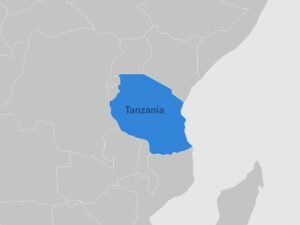
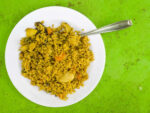
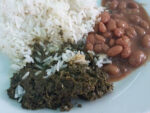
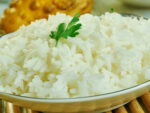

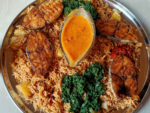
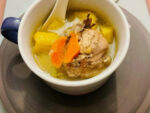
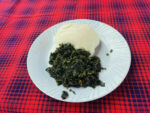
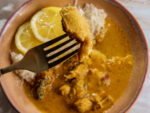

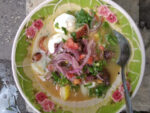



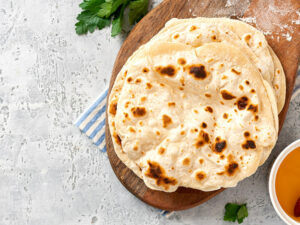
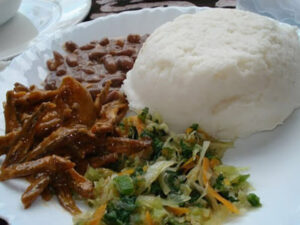
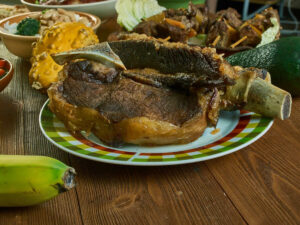
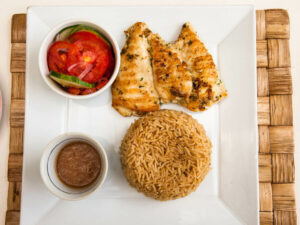
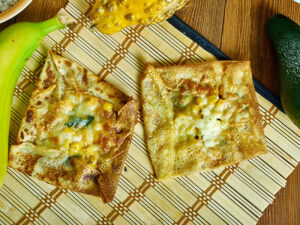
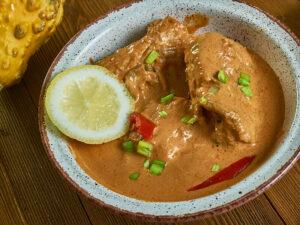
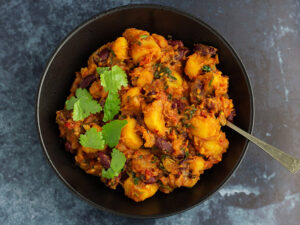
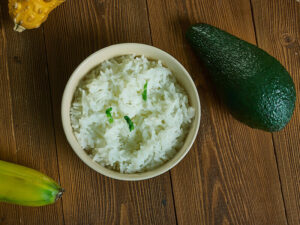
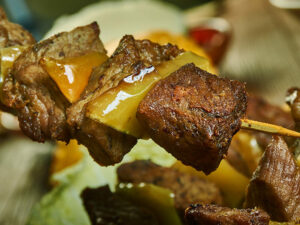
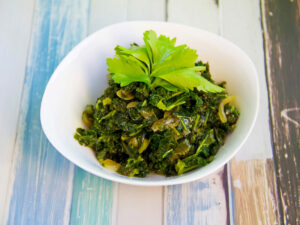
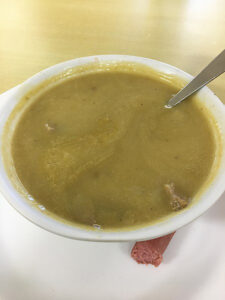
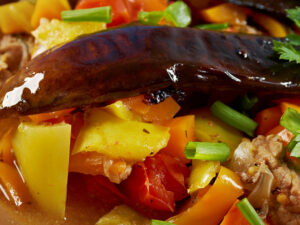
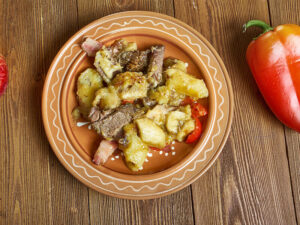
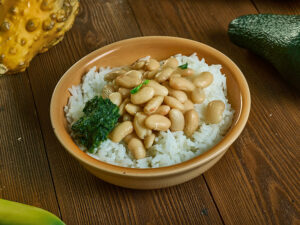
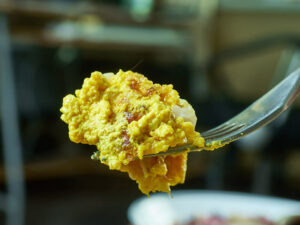
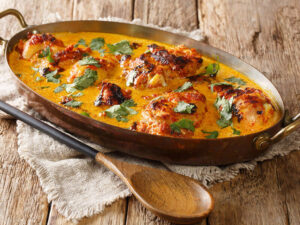
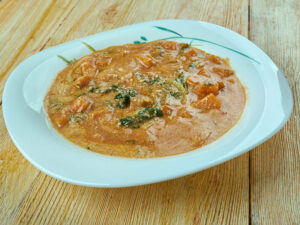
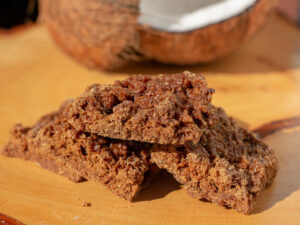
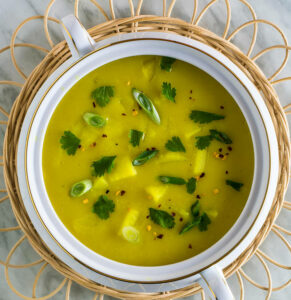

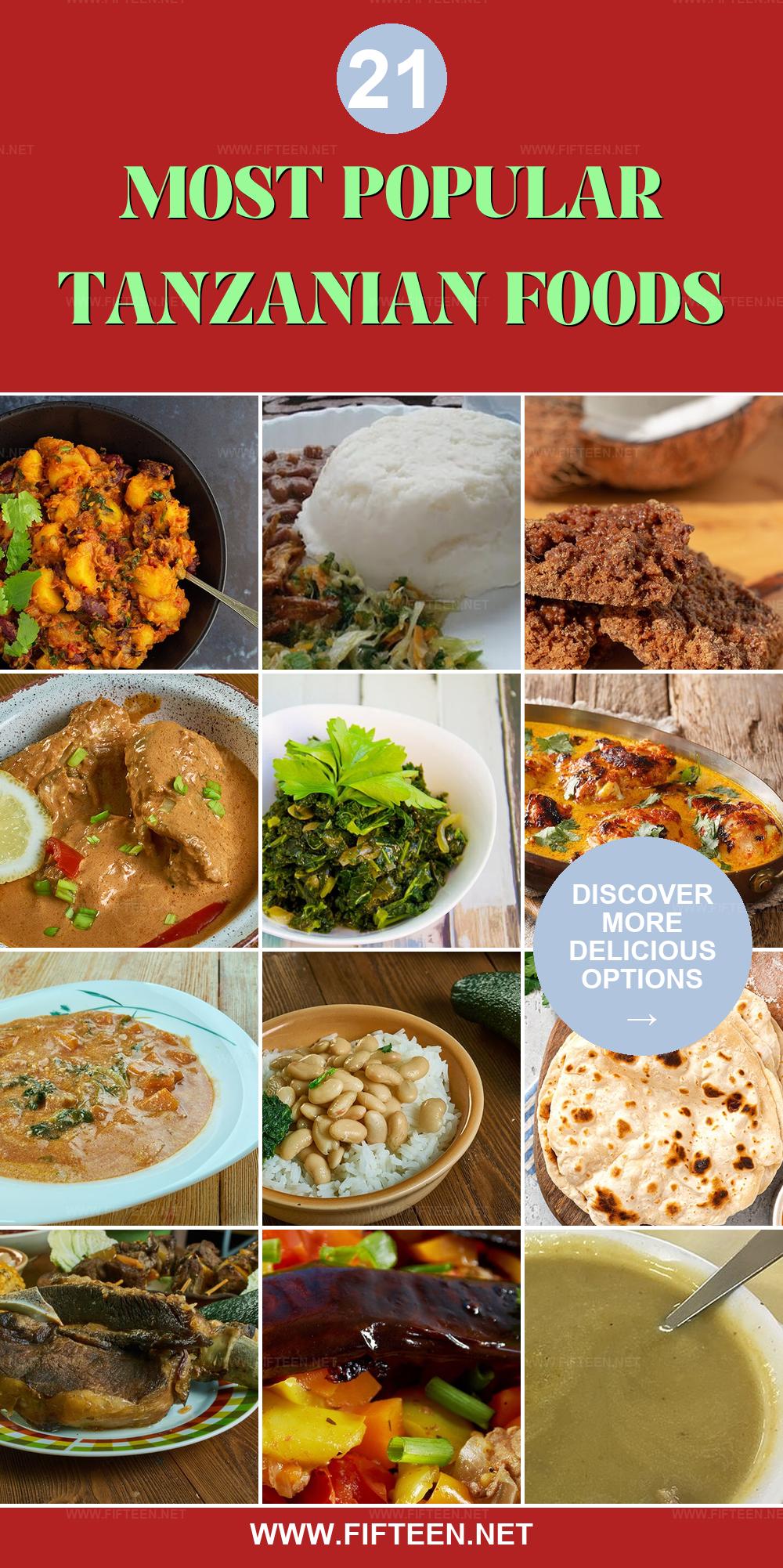
Jamie Scott
Editor in Chief, Senior Content Writer
Expertise
Home Cooking, Meal Planning, Recipe Development, Baking and Pastry, Food Editor, Cooking-video Maker, Western Food Evaluation Expert
Education
Le Cordon Bleu College of Culinary Arts
Local Community College, New York, NY
Jamie Scott is a skilled culinary expert and content creator specializing in Western cuisine. With over 15 years in the culinary field and formal training from Le Cordon Bleu, Paris, Jamie deeply understands how to blend nutrition with delicious flavors. His passion for cooking matches his commitment to making healthy eating accessible and enjoyable.
On Fifteen.net, Jamie brings a fresh perspective to classic dishes and beverages, offering readers insightful recipes, cooking tips, and a fresh view on meal planning that emphasizes taste, health, and simplicity.